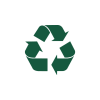No products added!
Are chemicals entering too deep in our air and water bodies or we are feeling paranoid?
November 21, 2020

Let’s do a quick reality check.
Cleaning is necessary for our homes or workplaces to stay healthy. But the cleaning agents such as soap, air fresheners, polishes often contain hazardous chemicals that are harmful to human health. And the interesting fact is many of the products do not show this on their label.
Some chemicals in cleaning products especially in aerosol sprays and air fresheners may react with atmospheric ozone to form formaldehyde which is a human carcinogen. Atmospheric ozone is also harmful that causes asthma and other lung diseases when it is present in the lower atmosphere.
They contain another highly toxic chemical, xylene and neurotoxins which are harmful to adults and kids. Air fresheners contain volatile organic compounds (VOCs) which are a risk for cardiovascular diseases.
Dish soap, toilet cleaner, and air fresheners contain phthalates in it. They are known as endocrine disruptors. A recent study from the Havard school of public health showed that men with higher phthalates in their blood have reduced sperm count.
Perchloroethylene (PERC) which is present in dry cleaning solutions and spot removers in a neurotoxin and a possible carcinogen. Exposure to PERC causes dizziness and loss of coordination.
Window glass cleaner, polishing agents for bathroom fixtures & jewelry contain ammonia, which is an easily evaporating powerful irritant. It affects people having asthma and other lung diseases. Regular ammonia inhalation can lead to developing chronic bronchitis.
Household tap water, detergents, and laundry whiteners often have high chlorine content. The health risks are acute but they can be chronic; respiratory irritant at an acute level and a serious thyroid disruptor at a chronic level.
Sodium hydroxide, 2-butoxyethanol, Quaternary ammonium compounds (QUATS), and triclosan are some other chemicals that are hidden in many cleaning products.
It is incumbent upon us to check the labels and know the ingredients well before we purchase.
References
Hazardous substances in frequently used professional cleaning products. International Journal of Occupational and Environmental Health. 2014 Mar; 20(1): 46–60.
Environmental risk assessment of cleaning product ingredients. Chemosphere. Volume 32, Issue 4, February.
8 Hidden Toxins: What’s Lurking in Your Cleaning Products . Experiencelife.com








